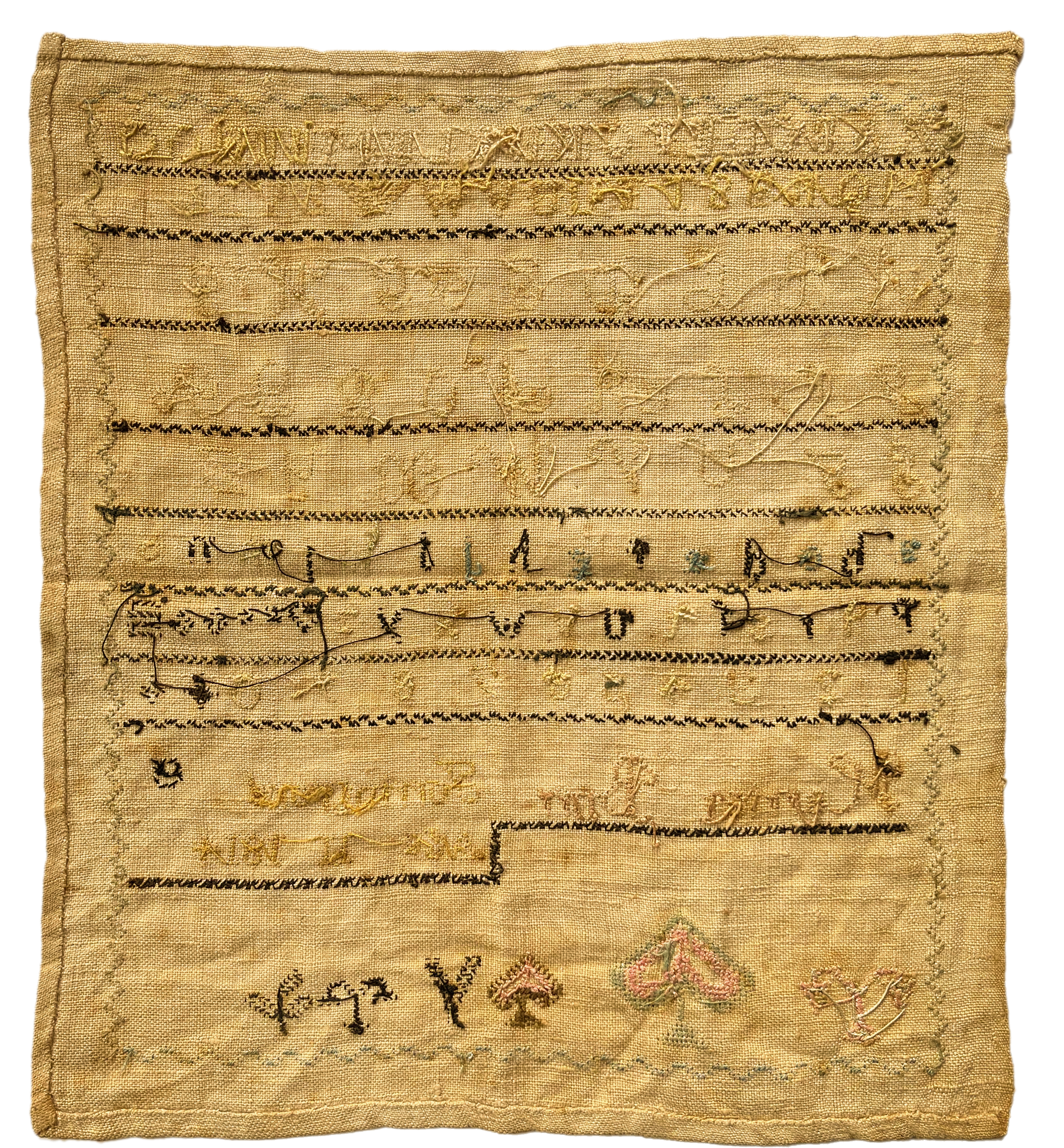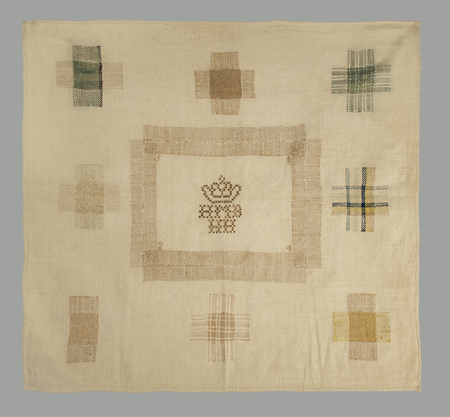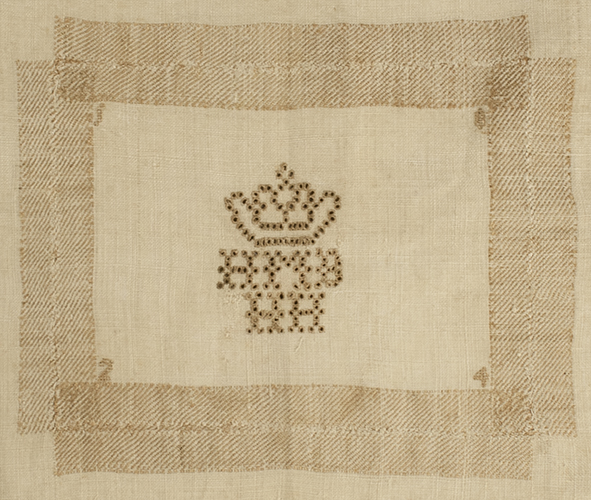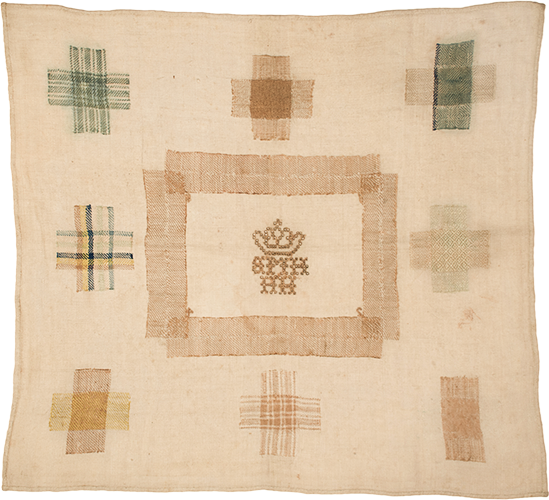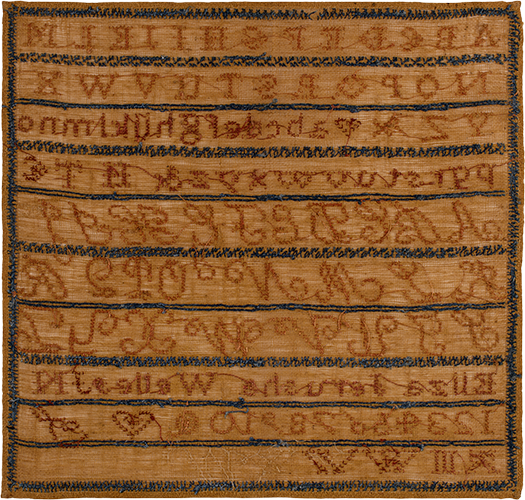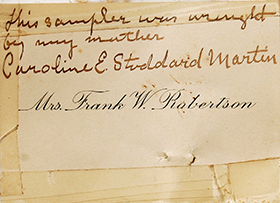Louisa Ellis,
Hull, Yorkshire, England, 1849
Louisa Ellis,

A large and handsome sampler with various alphabets and a numerical progression, this was likely the first sampler made by Louisa Ellis, age 9. She included the fact that she lived in Hull and we were able to research her family accordingly. John and Sarah Ellis had six children, Louisa was the youngest, born in 1840. John was a master carpenter, according to census records of Hull, which is a port city, located at the confluence of River Hull and the Humber estuary. Louisa remained single and lived with her family. She died at age 35 in 1874.
The sampler was worked in silk on linen and is in excellent condition. It has been conservation mounted and is in a molded mahogany frame.




